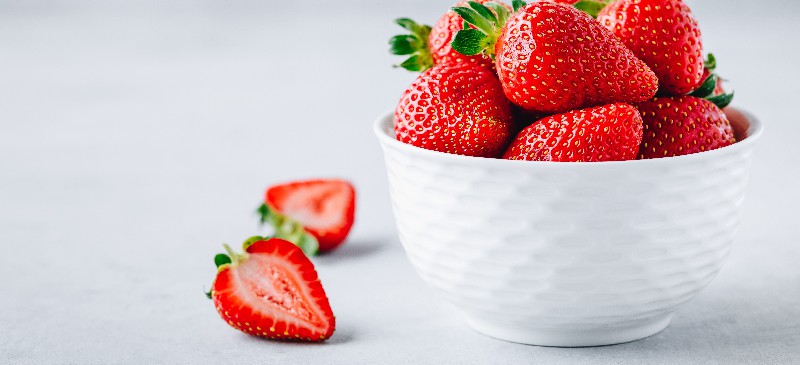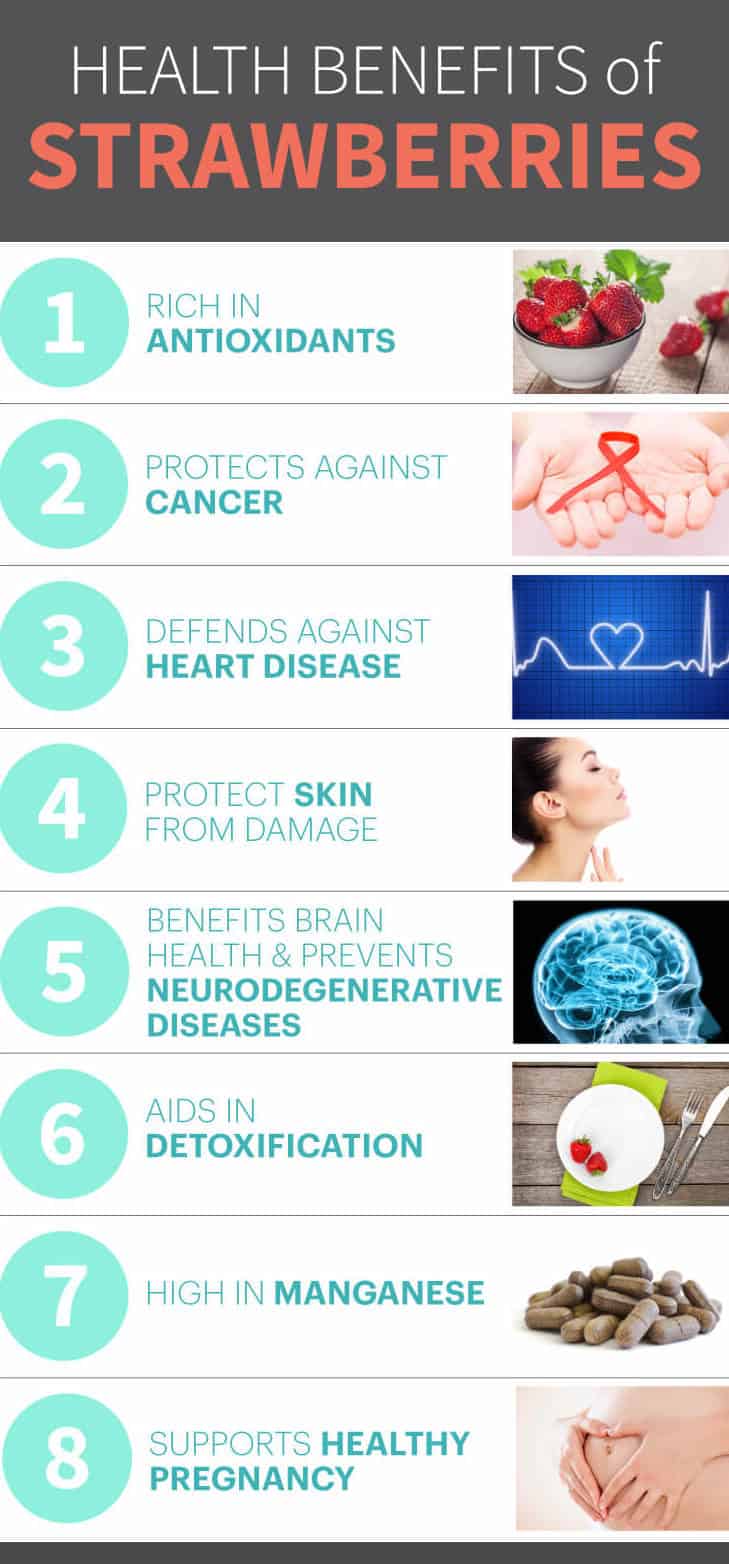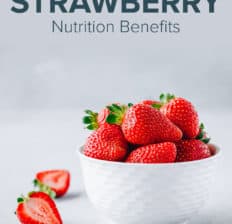This Dr. Axe content is medically reviewed or fact checked to ensure factually accurate information.
With strict editorial sourcing guidelines, we only link to academic research institutions, reputable media sites and, when research is available, medically peer-reviewed studies. Note that the numbers in parentheses (1, 2, etc.) are clickable links to these studies.
The information in our articles is NOT intended to replace a one-on-one relationship with a qualified health care professional and is not intended as medical advice.
This article is based on scientific evidence, written by experts and fact checked by our trained editorial staff. Note that the numbers in parentheses (1, 2, etc.) are clickable links to medically peer-reviewed studies.
Our team includes licensed nutritionists and dietitians, certified health education specialists, as well as certified strength and conditioning specialists, personal trainers and corrective exercise specialists. Our team aims to be not only thorough with its research, but also objective and unbiased.
The information in our articles is NOT intended to replace a one-on-one relationship with a qualified health care professional and is not intended as medical advice.
Strawberry Nutrition: An Antioxidant Powerhouse that Combats Disease
April 25, 2023

Strawberries are one of the most loved types of fruit for their sweet taste and versatility in recipes. It turns out, strawberry nutrition is good for you too.
What are benefits of eating strawberries? Most of the health benefits associated with strawberry nutrition are due to the presence of anti-inflammatory antioxidants. Strawberries contain numerous anti-aging flavonoid antioxidants, including anthocyanin and catechin — in addition to many others — that are associated with lowering the risk for chronic diseases, including cancer, metabolic syndrome and cardiovascular disease.
According to a 2016 review published in the Journal of Agricultural and Food Chemistry, “Among berries, the strawberry is a rich source of several nutritive and non-nutritive bioactive compounds, which are implicated in various health-promoting and disease preventive effects.”
Studies link strawberry consumption with better eye health, neurological health, protection against skin damage, lower levels of inflammation and even decreased arthritis pain due to the ability to fight free radical damage. With just 49 calories per cup, a relatively low amount of sugar, a good amount of dietary fiber and numerous health benefits, strawberries are one of the most nutrient-dense foods around.
What Are Strawberries?
Strawberries are a type of hybrid fruit species of the genus Fragaria.
Here’s a little-known fact about strawberries: They are not actually berries at all. Technically, the strawberry is an aggregate fruit, meaning it forms from a flower that has many ovaries.
Each apparent “seed” that can be seen on the outside of the fruit is actually one of the ovaries of the flower and has a strawberry seed inside of it.
Types of Strawberries:
There are actually many types of strawberry plants that are harvested for their fruit. It’s estimated that at least 20 strawberry species of the genus Fragaria are grown for their berries.
All types are are flowering plants in the Rosaceae (rose) family.
In a study published in the Journal of Agricultural and Food Chemistry, researchers examined six of the most popular strawberry types to test for differences in the level of flavonoid and anthocyanin antioxidants. Strawberry varieties that were tested included:
- Earliglow
- Annapolis
- Evangeline
- Allstar
- Sable
- Sparkle
- Jewel
- Mesabi
They found that strawberry antioxidant levels differed about 6 percent between the highest-containing varieties and lowest. Researchers did not consider this to be a significant difference, concluding that all varieties offer high levels of protective properties and that consumers do not necessarily need to purchase one type of strawberry over the others.
Aside from those tested, other strawberry varieties include:
- alpine
- ozark beauty
- seascape
- Virginia wild strawberry
- beach/coastal
- chandler
- tristar
- honeoye
- musk/hautbois strawberries
Other Interesting Strawberry Facts:
What do strawberries symbolize?
Strawberries get their name from the stacks of straw that were piled around the plants to protect them from rodents and pests. They have a long history that goes back at least 2,200 years. Strawberries first grew in parts of France and Italy as long ago as 234 B.C.
With more research coming out every year about the benefits of strawberry nutrition and the importance of including berries in a healthy diet, strawberries have continued to grow in popularity as demand for them has continuously risen over the past century.
Today, strawberries are grown most in California, where they have been harvested since the early 1900s. Over 25,000 acres of strawberries are planted each year in California, the state that produces over 80 percent of the strawberries grown in the United States — or about 1 billion pounds of strawberries a year.
Can dogs eat strawberries? Yes, your furry friend can eat them, but they should only be given to dogs in moderation.
Strawberry Nutrition Facts
One cup (about 144 grams) of fresh, whole strawberries contains approximately:
- 46.1 calories
- 11.1 grams carbohydrates
- 1 gram protein
- 0.4 grams fat
- 2.9 grams fiber
- 84.7 milligrams vitamin C (141 percent DV)
- 0.6 milligrams manganese (28 percent DV)
- 34.6 micrograms folate (9 percent DV)
- 220 milligrams potassium (6 percent DV)
- 18.7 milligrams magnesium (5 percent DV)
- 3.2 micrograms vitamin K (4 percent DV)
- 0.6 milligrams niacin (3 percent DV)
- 0.1 milligrams vitamin B6 (3 percent DV)
- 0.6 milligrams iron (3 percent DV)
- 34.6 milligrams phosphorus (3 percent DV)
- 0.1 milligrams copper (3 percent DV)
Health Benefits
1. Rich in Antioxidants
Although there are relatively little strawberry calories in one cup of fresh berries, there are lots of antioxidants and vitamins in strawberry nutrition. According to strawberry nutrition studies, strawberries are a high source of various antioxidants, including anthocyanins like pelargonidin, ellagic acid and other ellagitannins, procyanidins, uteolin, gallic acid, flavonols, polyphenols, tannins, quercetin and many others.
Research shows they are one of the best known sources of numerous anthocyanins and phenolic antioxidants.
Strawberry seeds and “flesh” both house these special compounds, in addition to two other principle micronutrients (vitamins) that act as antioxidants in the body: vitamin A (in the form of beta-carotene, which is a precursor to vitamin A) and vitamin C (in the form of ascorbic acid).
What do strawberries do to the body?
Their antioxidants are one of the body’s first lines of defense, reducing free radical damage that leads to inflammation and chronic disease development. Antioxidants “donate” electrons to unstable free radicals that are missing electrons. This means that free radicals do not go looking to take electrons from nearby healthy cells, which will then be destroyed.
Antioxidants slow the occurrence of oxidative stress from taking place, which is responsible for the aging process and formation of most diseases, including cancer, heart disease, diabetes and neurological disorders.
2. Protects Against Cancer
Research shows that one of the most important health benefits of strawberries and blueberries is the ability to fight against cancer. That’s why they are two of the best cancer-fighting foods around.
Individual compounds in strawberries have demonstrated anti-cancer activity in several different experimental systems. Research shows that strawberry benefits include the ability to block initiation of cancer cell formation (called carcinogenesis) and suppress progression and proliferation of cancerous tumors.
In controlled studies, results showed that when participants were given strawberry extract containing anthocyanin antioxidants, human liver cancer cells were significantly inhibited compared to the group that did not receive the extract. Berry consumption is also associated with a lower risk for breast cancer, colon cancer, prostate cancer and skin cancer.
3. Defends Against Heart Disease
When it comes to heart health, what happens if you eat strawberries every day? Strawberry antioxidants fight the oxidation process, which is crucial because oxidative damage has been linked to an increased risk of experiencing a heart attack, stroke or other forms of coronary heart disease.
Strawberry antioxidants help lower the risk of cardiovascular disease by inhibiting “bad” LDL-cholesterol oxidation, limiting lipid oxidation and plaque buildup in arteries, improving blood vessel function and blood pressure, and decreasing the tendency for dangerous blood clots forming inside blood vessels (called thrombosis).
One study found that among adults with hyperlipidemia, strawberry supplementation reduced oxidative damage to LDL while maintaining reductions in blood lipids and enhancing diet palatability. Furthermore, strawberry extracts have been shown to decrease the inflammatory response within the body, which is one of the major causes of heart disease.
If you’re on a low-carb diet with the goal of weight loss, here are some strawberry advantages and disadvantages to consider: Strawberries may contain carbs and sugar, but they are lower in both than many other fruits.
Researchers have also found that for people following a diet intended at preventing or reversing heart disease, adding strawberries and other high-fiber fruits has an additional benefit of making the diet more appealing, palatable and sustainable long term.
4. Protects Skin From Damage
Internal and external influences over time alter the condition and appearance of skin as we age. As a consequence of a poor diet, sun exposure and environmental toxins, the skin undergoes photoaging, inflammation, and may show signs of immune dysfunction, acne and other skin disorders.
Luckily, nutrition researchers are developing new insights into the relationship between nutrient-rich food intake and skin health. Studies show that certain plant foods prove to be very beneficial for optimal skin conditions, including foods high in antioxidants like strawberries.
Some of the best foods for skin health include strawberries and other berries. Berries contain antioxidants like vitamin A and vitamin C, which are associated with improving skin properties, including hydration, sebum production, lower levels of wrinkles and discoloration, a reduced risk for skin cancer, and improved elasticity.
High levels of vitamin C, one of the biggest benefits of strawberry nutrition, has additional benefits related to promoting collagen synthesis, photo-protection from ultraviolet light, lightening hyperpigmentation and improving a variety of inflammatory rashes that can appear on the skin too.
5. Benefits Brain Health and Prevents Neurodegenerative Diseases
Want yet another benefit of strawberry nutrition? Studies indicate that diets rich in strawberries and other berries may have the potential to protect against aging in the brain.
Berries are high in flavonoids, especially anthocyanidins, which are known to improve cognition in experimental studies.
In a study published in Annals of Neurology, when researchers evaluated whether long-term intake of berries and flavonoids was associated with slower rates of cognitive decline in older adults, the results showed a positive correlation between higher berry consumption and a slowed rate of oxidation damage in the brain. For this reason, health professionals recommend that the general population includes berries in the diet as often as possible for their ability to defend against oxidative stress and inflammation in the brain, loss of memory, and diseases like Alzheimer’s and dementia.
6. High in Fiber and Aids in Detoxification
Strawberries help detoxify the body by helping restore the health of the digestive tract, promoting digestive regularity and providing anti-inflammatory antioxidants. Vitamin A and vitamin C are necessary for any ongoing detoxification efforts by your body, in addition to both soluble fiber and insoluble fiber.
Vital antioxidants are especially needed during the body’s detox process in order to neutralize and eliminate toxins that induce excessive free radical damage, inflammation and digestive disorders.
High-fiber foods like strawberries can help keep the digestive system in good health by preventing constipation, balancing the pH level of the gut and reducing inflammation in the gut, which can result in leaky gut syndrome and other digestive conditions. Due to being a high-fiber fruit, they also have a relatively low score on the glycemic index.
7. High in Manganese
One cup of strawberries provides an impressive 28 percent of the daily recommended allowance of manganese. Manganese is needed for proper nervous system and brain health and may help prevent neurological disorders like Parkinson’s disease and epilepsy, according to studies.
The rich supply of manganese is one of the best strawberry benefits for men, since this mineral is needed for the formation of strong bones and connective tissues, healthy blood-clotting, and production of reproductive sex hormones.
8. Supports Healthy Pregnancy
Strawberries are a good source of folate, a type of B vitamin that helps tissues grow, cells properly function and is crucial for a healthy pregnancy. Consuming or taking the right amount of folate before and during pregnancy helps prevent certain birth defects, including spina bifida. It also helps prevent anemia.

How to Plant, Grow and Pick
Strawberries have a short growing season, only about one to two months during the summer, with most markets selling them from about June–August. If you’re lucky enough to get them during peak strawberry season, they are very perishable and require cool, dry storage to remain fresh, which is why they are commonly sold frozen.
How to Buy and Store Strawberries
According to the Environmental Working Group, which tests different fruits and vegetables for pesticide and toxin contamination, strawberries are one of the most chemically sprayed foods there is.
If you want to get the most strawberry nutrition benefits and avoid chemical exposure, it’s important to buy organic strawberries. When tested, strawberries contained a number of different pesticide residues and showed high concentrations of pesticides relative to other produce items. Therefore they are on the EWG’s “Dirty Dozen List,” which is the list of produce you should always try to buy organically grown.
When purchasing strawberries, look at the color and condition of the skin, but also make sure to smell them. For the best strawberries, you want to smell a fragrant, sweet odor, which shows that the berries have become ripe enough.
Look for a bright to deep red color, and avoid any berries that appear very dark and mushy, indicating they are going to spoil pretty quickly.
A strawberry picked under-ripe will have a white or even slightly green color at the top. These lack as much flavor. Wait several days for them to ripen more before eating them.
Strawberries come in different sizes depending on the type and how they are grown. Some are much smaller than others, but all types have similar health benefits.
They are perishable and tend to go bad rather quickly, so try using them within a few days of purchasing them. Keep strawberries in the refrigerator unwashed to prolong their freshness. Washing them ahead of time can lead to mold growth.
Growing Strawberries
Strawberries are low-growing herbaceous plants that can grow in a wide range of soils and situations. This makes them relatively easy to grow at home. Because they are perennials, they will keep coming back each year.
You can plant strawberries in space containers, raised beds or garden plots. You can choose to either grow from seeds or transplant small plants.
They have a low fertilizer requirement but are susceptible to drought and require moisture-retaining soil — however too damp of soil will result in poor growing. They also need lots of sunlight, so plant away from shade or hovering trees.
Choose the variety you want to grow, depending on how much yield you’re looking for each year, and then find a spot that has deep soil, lots of room for sprawling and plenty of light. You may want to protect the berries from birds and rodents by covering them with bird netting.
Berries should be ready for harvesting four to six weeks after blossoming. Pick only fully red (ripe) berries, about every three days. Cut the berries by the stem, but do not pull the berries.
For other planting tips, visit the Farmer’s Almanac or Strawberry Plants Organization websites.
Recipes
What are strawberries used for in the culinary world?
Strawberries are extremely versatile and can be used in breakfast smoothies, on salads, in desserts or simply eaten alone as a snack. Although strawberry preserves and strawberry artificial flavoring are commonly added to packaged foods, it’s best to eat fresh strawberries.
Try making one of the strawberry recipes below to take advantage of the many strawberry nutrition health benefits:
- Strawberry Shortcake Cupcakes
- Strawberry Ice Cream
- Homemade Strawberry Lemonade
- Gluten-Free Homemade Berry Tart
- Strawberry Banana Smoothie
- Strawberry Kiwi Smoothie
- Hydrating Watermelon Smoothie Recipe with Strawberries and Banana
- Strawberry Spinach Salad
Other healthy ways to use strawberries include making:
- No sugar-added strawberry rhubarb pie
- Gluten-free strawberry cake with coconut flour
- Strawberry pie made with almond flour
- Strawberry jam made with chia seeds
Risks, Side Effects and Interactions
You may wonder: Can I eat too many strawberries? One potential problem with consuming lots of conventionally grown strawberries is pesticide and chemical exposure.
Ideally you want to only buy organic strawberries to avoid any toxic elements.
All berries in general are normally heavily sprayed with chemicals during harvesting because they are prone to being eaten by bugs and rodents since they grow low to the ground and have soft, sweet skin. Therefore, to reduce your risk to chemical exposure and to get the most strawberry nutrition benefits, always look for organic berries, whether they are fresh or frozen.
What happens if you eat too many strawberries?
For some people, the fiber in strawberries may cause bloating or indigestion. Another potential issue is allergies.
Although strawberries are extremely healthy for the average person, they may pose a risk for anyone who has allergies to different types of histamine-containing fruits or berries in general.
A food allergy is a type of autoimmune system response that can result in itching around the mouth, skin inflammation and digestive problems, including diarrhea and vomiting.
Strawberries contain histamines, organic compounds in the body that help regulate the immune response. When the body is unable to digest or process the food, pollen or substance, the histamines can trigger the alarm that causes the body to react to the “invader.”
Mild to strong symptoms can occur, such as itching, wheezing and hives, in certain people are prone to histamine intolerance, so if you experience any issues eating strawberries, you may want to have an allergy test conducted at a doctor’s office.
Final Thoughts
- Strawberries are a type of hybrid fruit species of the genus Fragaria. They are not actually berries at all but are technically aggregate fruits.
- Why are strawberries good for you? Strawberry nutrition is low in calories but high in antioxidants, vitamin C, vitamin A and fiber. Some other micronutrients in strawberry nutrition include manganese, magnesium, folate and potassium.
- Research shows that strawberry benefits include fighting free radicals, defending against cancer and heart disease, protecting the skin, supporting brain health, aiding in detoxification, and supporting a healthy pregnancy by providing nutrients like folate.














